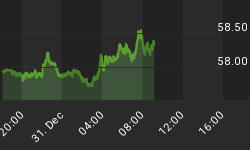My first post on my blog in September warned about the coming drop in real estate prices. I revisited the topic a couple of weeks ago, as I prepared the research of a short position in the sector. Well, we are almost done with the research and the position and I will release a summary of the research and the performance (expected and actual) of the position after Christmas.
In the meantime, this is a tidbit gleaned from my studies. We literally modeled and valued 260 properties of a certain REIT (each model is about 65 pages long, and very detailed and analytical - in real terms, no fluff here) that came up in a scan for CRE participants with bad numbers. We canvassed brokers, institutional data sources, sellers and buyers (9 sources in total) to get a detailed understanding of the lease rates, climate, and sentiment of the geographic area of each individual property. This is probably one of our the most ambitious works this year, and makes for extremely informative reading for those who have a real interest in the sector. We covered 41 states 2 countries and a whole lot of cities, all accurate to within a distinct business district of each property, where available.
What I found was that, at least where this REIT operates, the commercial real estate bubble (yes, there was an easy money induced bubble) peaked in Q4'05, where the spread between new leases and existing leases maxed out at about $5.30/ft. This spread actually went negative in Q4'06, and that negative margin increased substantially.

What does this mean? Well, for one, most people think the commercial property sector will start to drop soon. They are not aware that the main value driver of CRE, NOI, started dropping 2 years ago. Operating expenses are rising due to inflation (which is real, and not to be confused with the fudd that the government puts out), while rents have been dropping.
In addition, the easy money liquidity has been pushing cap rates down (as if the falling net operating profit wasn't enough to do this), thus prices up. This money didn't dry up until a few months ago, probably marked by the Blackrock deal flipped from Sam Zell's properties in near real time. That was just a few months ago. So, revenues go down and expenses go up even as prices shoot up for two years straight (I guess nobody stopped to count the money), then easy and lax funding suddenly disappears... I have above a considerably astute constituency for my blog, so you know how this story ends. New rents are now coming in below existing rents as we approach a potential economic hard landing. To exacerbate the matter, leases expiring(ed) in '06 are 20% below that of the current asking price, and 29% below the average in place rent. This means that the companies renewing these leases have a much larger chunk coming out of their cash flows for rent. These are big numbers for low margin businesses, and even bigger numbers for low margin businesses going through an economic hard landing.
We will see what happens next, for those that bought buildings with lessors attached to highly inflated leases are going to get a lot of pushback for renegotiation, or worse, actual breach. Just as in the residential housing sector, stakeholders don't want to see their investments (leases, or homes) underwater and falling even farther as they struggle to make the payments. With such a big jump in rental prices up for renewal, landlords are going to be hard pressed to have any pricing power, for the resistance has already shown itself to be much more than just a few months ago. If you paid a 3% cap rate for a building with expenses trending upwards, you will need pricing power - and that is not even taking into consideration the use of leverage. Such inelasticity can lead to lower economic value.
This leads me to the value of the CMBS that these properties back. With a overly optimistic assumptions of cash flows, expenses and forward looking macroeconomic trends, there is no wonder why the spreads in these securities have widened so much as of late. It is not sympathy for the residential market - the commercial market has issues of its very own. Even the high end NYC (where it was thought that real estate was bullet proof - you know, the "But it's different this time" mentality) commercial real estate rags who have been bullish for the past 6 months while I have been a virtual grizzly bear, have decided to come around to my way of thinking. You think maybe they started reading my blog:-0
- The Commercial Slowdown
- Technical defaults rise, but foreclosures don't hit
- Big block leasing activity taps the brakes
- Manhattan office market sees vacancy rise
- City revenue from big building sales expected to dry up
- Rental market shows some signs of weakness
- After slow fall, inventory starts to grow
- Brokers saying 'no thanks' to stubborn sellers
Neophyte and/or overzealous (like those who bought from Blackrock recently) investors are sure to be bathed in buyer's remorse as well, as the realization of purchasing at the top of a sinking market sinks in. No pun intended. A summary of the analysis will be available on www.boombustblog.com for free after Christmas (Merry Christmas), and the full analysis will be available to our paying subscribers.
















